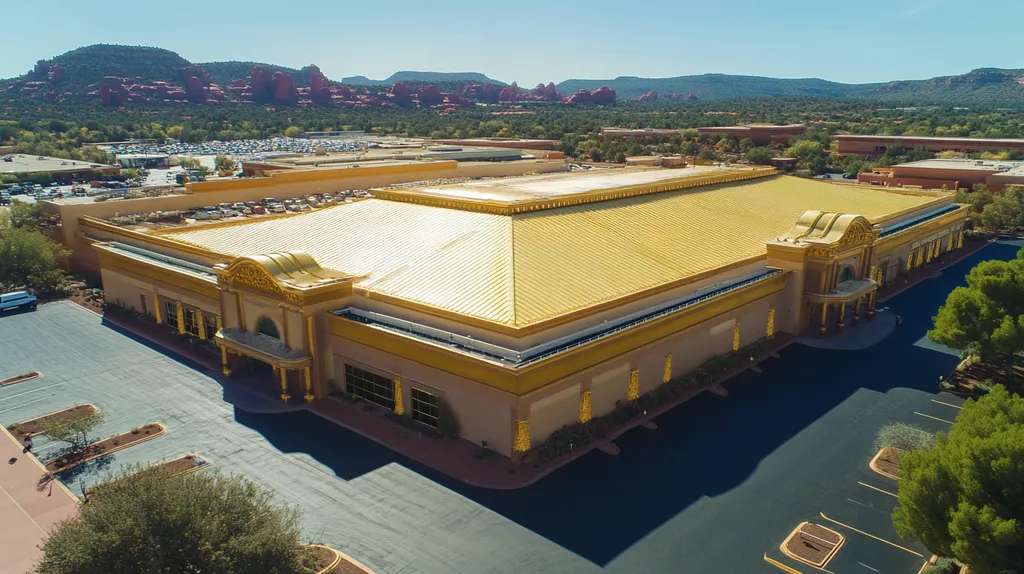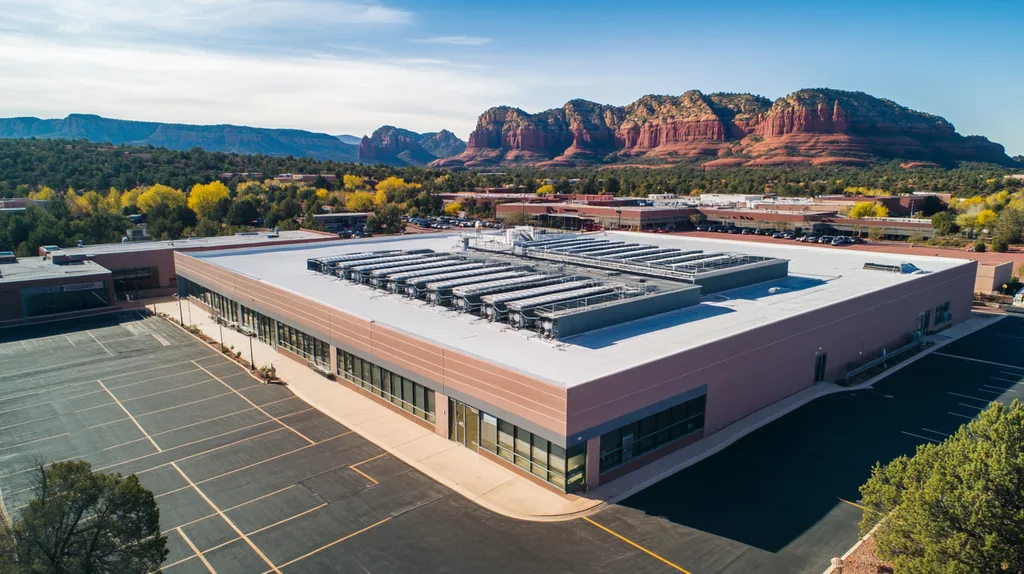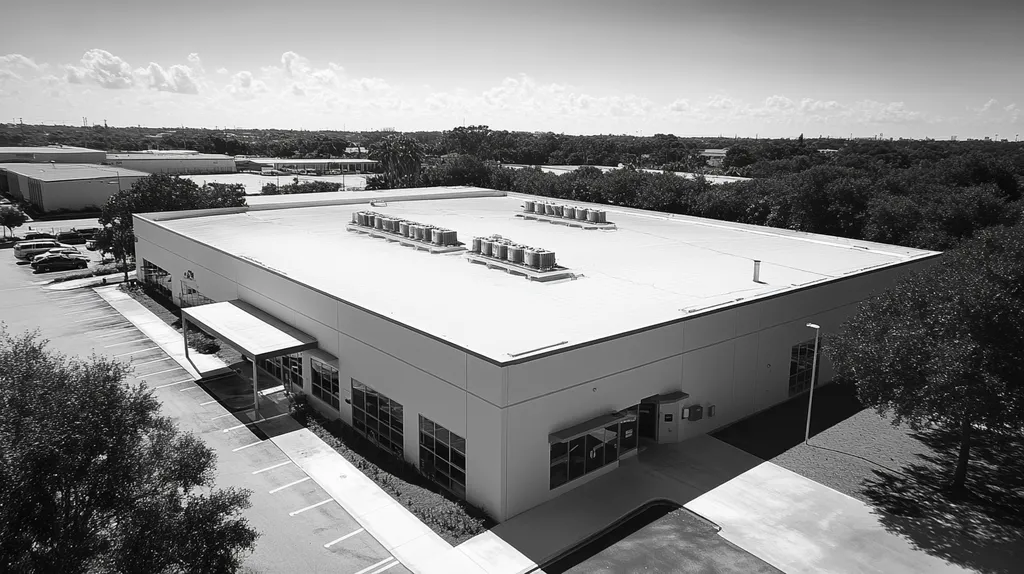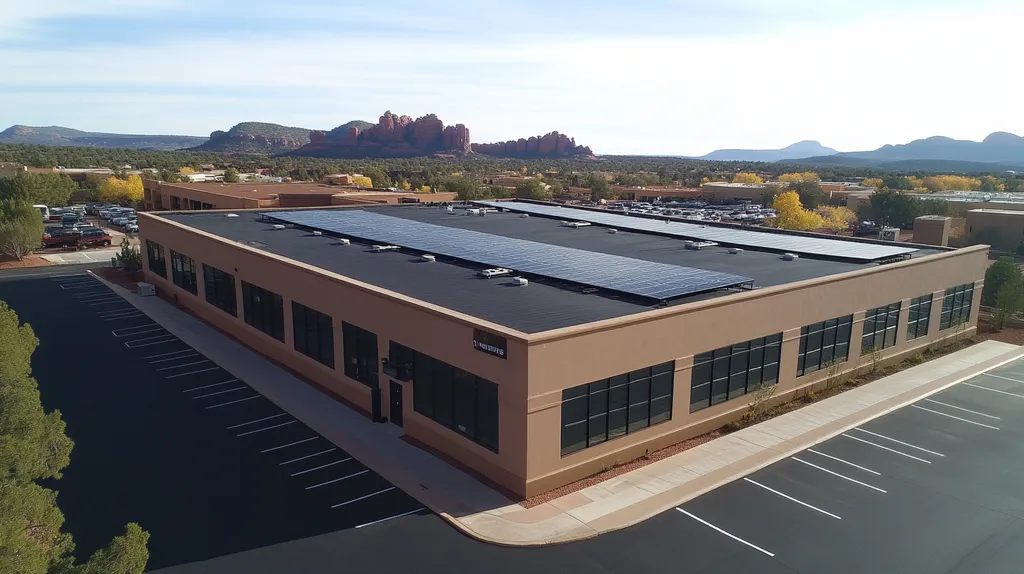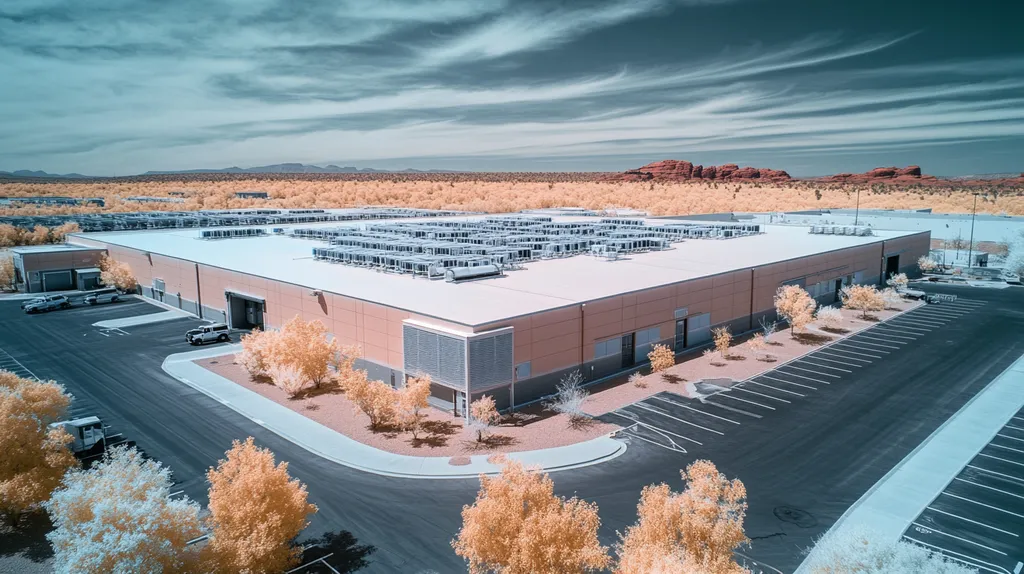Commercial roof failure costs U.S. businesses over $2.5 billion annually in damage and lost productivity, yet studies show 80% of these incidents are preventable through proper inspection protocols.
As building systems grow more complex and weather patterns become increasingly severe, the need for systematic roof evaluation has never been more critical.
This comprehensive guide examines the fundamental concepts, key components, and proven methodologies that facility managers need to protect their roofing investments and prevent catastrophic failures.
SECTION 1: FUNDAMENTAL CONCEPTS
Every commercial roof represents a significant investment that protects millions in business assets, yet studies show that over 80% of roofs are replaced prematurely due to inadequate maintenance and inspection. The complexity of modern roofing systems, combined with increasingly extreme weather patterns, makes understanding fundamental roofing concepts more critical than ever. This section explores the essential principles that every facility manager needs to know about roof functionality, deterioration patterns, and early warning signs of failure.
Principles of Commercial Roof Functionality
Commercial roofs serve as complex environmental barriers that must simultaneously repel water, resist temperature extremes, and maintain structural integrity. Understanding this multi-faceted role helps facility managers make better maintenance decisions.
The primary function of any commercial roof is creating a watertight envelope that protects the building’s contents and structure. This involves multiple layers working in concert, from the outer membrane or coating to underlying insulation and vapor barriers.
Beyond water protection, modern commercial roofs play a crucial role in building energy efficiency. Proper insulation and reflective surfaces can reduce HVAC costs by 15-30% in many climates.
The roof’s drainage system is equally vital, designed to channel water away quickly through a network of slopes, drains, and gutters. Even minor drainage issues can cascade into major structural problems if left unchecked.
Common Roof Deterioration Mechanisms
Weathering represents the most persistent threat to roof integrity. UV radiation breaks down roofing materials at the molecular level, while repeated heating and cooling cycles cause materials to expand and contract, creating stress points.
Water infiltration accelerates deterioration through multiple pathways. Standing water can seep through tiny breaches, freeze and expand in cold weather, and create ideal conditions for biological growth that further damages roofing materials.
Physical impact damage from maintenance traffic, falling debris, or severe weather events creates vulnerabilities that compound over time. Even minor surface damage can become entry points for moisture.
Chemical exposure from air pollution, cleaning products, or HVAC discharge can degrade roofing materials prematurely. This is especially concerning in industrial areas or near equipment exhausts.
Key Indicators of Roof Failure
Regular inspections can uncover problems early, preventing water intrusion and extensive damage. The most reliable approach combines visual inspections with systematic documentation of potential issues. (source: The Hanover Insurance Group)
Interior warning signs often appear before exterior damage becomes obvious. Water stains, unusual odors, or increased energy costs can signal roof problems requiring immediate investigation.
Surface deterioration patterns provide crucial early warnings. Blistering, cracking, or separation at seams indicates material failure that will worsen rapidly without intervention.
Drainage issues manifest through ponding water, clogged gutters, or water stains on exterior walls. These conditions demand prompt attention as they accelerate deterioration of the entire roofing system.
Age-related wear becomes increasingly important to monitor as roofs approach their expected service life. Most commercial roofing systems show accelerating deterioration in their final years.
SECTION 2: SYSTEM COMPONENTS
Commercial roofing systems represent complex assemblies where failure of any single component can compromise the entire structure. Industry data shows that 85% of premature roof failures stem from inadequate attention to critical components during routine inspections. Understanding these core elements is essential for maintaining watertight integrity and maximizing roof lifespan. This section examines the key components that demand careful inspection and maintenance.
Roof Membranes and Waterproofing Materials
Modern commercial roof membranes come in several varieties, each with distinct inspection requirements. Single-ply systems like TPO and EPDM dominate the market due to their durability and cost-effectiveness, but require specific attention to seam integrity and surface deterioration.
Built-up roofing (BUR) systems utilize multiple layers of waterproofing materials that must be inspected for blistering, cracking, and delamination. Even small breaches in these layers can allow moisture to penetrate and spread undetected.
Modified bitumen systems combine the durability of asphalt with the flexibility of rubber compounds. Regular inspection should focus on granule loss, membrane separation, and UV degradation patterns.
The membrane’s attachment method – whether mechanically fastened, fully adhered, or ballasted – requires different inspection approaches. Loose or improperly secured areas can lead to wind damage and water infiltration.
Flashings, Sealants, and Penetrations
Flashings represent critical transition points where the roof membrane meets vertical surfaces or penetrations. These areas experience intense stress from thermal movement and water exposure, making them primary inspection priorities.
Metal flashings must be examined for corrosion, loose fasteners, and separation from adjacent materials. Failed sealants at these junctions often create direct pathways for water entry.
Roof penetrations require particularly thorough inspection due to their vulnerability. HVAC units, vent stacks, and other equipment mounted on the roof create potential weak points that demand regular evaluation.
Expansion joints and control joints need specific attention during inspections. These engineered gaps allow for building movement but can fail if not properly maintained and sealed.
Drainage Systems and Structural Elements
Proper drainage prevents water accumulation that can stress the roof structure and accelerate material deterioration. Inspection must verify that all drains, gutters, and downspouts remain clear and functional throughout the year.
Are there apparent cracks, gaps, or damage to gutters and storm drains? Evidence of microbial growth often indicates chronic drainage issues that require immediate attention. Proper flashing system seals and wall integrity also demand thorough evaluation. (source: Highpoint Insurance Group)
Structural elements supporting the roof system require careful assessment for signs of stress or deterioration. Sagging, deflection, or visible damage can indicate serious underlying problems.
The interface between drainage components and the roof membrane deserves special scrutiny. Loose or damaged drain flanges, clogged screens, and deteriorated sealants can allow water to bypass the drainage system entirely.
SECTION 3: IMPLEMENTATION METHODS
Modern commercial roofs represent substantial investments, with replacement costs often exceeding $10 per square foot. Yet studies show that 90% of premature roof failures stem from inadequate inspection practices. As weather patterns become more extreme and roofing systems grow more complex, implementing proper inspection protocols becomes critical for protecting these assets. This section examines proven methods for thorough roof evaluation, documentation, and reporting.
Visual and Instrumental Inspection Techniques
Professional roof inspections combine systematic visual examination with advanced diagnostic tools to create a complete picture of roof condition. Regular visual inspections can identify surface-level issues like blistering, ponding water, or compromised flashings before they escalate into major problems.
Most professional roof inspectors now complement traditional visual assessments with modern technology, including infrared scanning and aerial imaging. These tools can detect hidden moisture intrusion and structural issues that might otherwise go unnoticed. (source: Owens Corning)
Core sampling provides direct evidence of membrane condition and insulation saturation levels. This destructive testing method should be used selectively and always followed by proper patching to maintain roof integrity.
Electronic leak detection helps pinpoint breaches in the roofing membrane that visual inspection might miss. This technology is particularly valuable for identifying the true source of leaks, which often appear far from where water enters the building.
Interior vs. Exterior Assessment Protocols
Comprehensive roof evaluation requires both exterior and interior assessment protocols. Exterior inspections should follow a systematic grid pattern to ensure complete coverage, with special attention to high-stress areas like corners, penetrations, and drainage points.
Interior inspections begin in the uppermost occupied spaces, examining ceiling tiles, walls, and structural elements for signs of water infiltration. Staining patterns often reveal the path water takes through the building envelope.
Building pressurization testing can expose weaknesses in the roof assembly by forcing air through any existing breaches. This technique proves especially valuable for identifying subtle defects before they cause visible damage.
Seasonal timing affects inspection effectiveness, with certain issues more apparent during specific weather conditions. Schedule critical assessments during both wet and dry periods to capture the full range of potential problems.
Documentation and Reporting Standards
Effective documentation creates a detailed historical record of roof condition and performance. Digital imaging with GPS tagging enables precise tracking of problem areas and repairs over time, supporting more informed maintenance decisions.
Standard reporting formats should include condition ratings for all major components, photographic evidence of findings, and clear recommendations for corrective action. This consistency allows meaningful comparison between successive inspections.
Maintenance logs must track all roof activity, including repairs, equipment installation, and even foot traffic patterns. This information helps identify the root cause of problems and prevents unauthorized modifications that could void warranties.
Cloud-based documentation systems enable real-time updates and immediate access to historical data. This accessibility improves communication between stakeholders and speeds response to emerging issues.
SECTION 4: MAINTENANCE REQUIREMENTS
Studies show that 80% of commercial roof failures stem directly from inadequate maintenance, with repair costs averaging $5-7 per square foot when issues are caught early versus $25-35 per square foot for major repairs. Yet many facilities still take a reactive approach, responding only when leaks appear. This section examines critical maintenance requirements that protect your roofing investment and prevent catastrophic failures.
Routine Cleaning and Debris Removal
Regular cleaning prevents debris accumulation that can trap moisture and accelerate material deterioration. Even small amounts of organic matter can create conditions for premature aging and membrane damage.
Commercial roofs require inspection and cleaning at least twice annually, with additional checks after severe weather events. Systematic removal of leaves, branches, and wind-blown debris maintains proper drainage and allows early detection of developing issues.
High-traffic areas need more frequent attention to prevent damage from maintenance foot traffic. Establishing designated walkways and access points helps concentrate wear patterns and protect the surrounding roof surface.
Safe cleaning practices include using appropriate tools that won’t damage the membrane and following manufacturer guidelines for chemical cleaners. Pressure washing should be avoided unless specifically approved for the roofing system.
Flashing and Sealant Repair Practices
Flashing failures account for nearly 60% of roof leaks, making regular inspection and maintenance of these critical components essential. Areas where different materials meet require particular attention due to thermal movement stress.
Professional assessment should examine all flashing conditions including separation, loose fasteners, and deteriorated sealants. Early intervention with proper repairs prevents water infiltration that can compromise the entire roofing system.
Repair materials must match the original system specifications to maintain warranty coverage. Using compatible sealants and following proper application procedures ensures long-term performance.
Document all repairs with photographs and detailed notes to track problem areas and identify patterns requiring more comprehensive solutions. This documentation proves invaluable for warranty claims and maintenance planning.
Drainage System Maintenance Procedures
Effective drainage remains critical for protecting roof integrity and building structure. Regular inspection of drains, scuppers, and downspouts prevents water accumulation that can stress the roofing system and lead to premature failure.
Core samples help determine substrate conditions and identify moisture infiltration before visible damage occurs. This diagnostic approach enables targeted repairs that address root causes rather than symptoms. (source: American WeatherStar)
Install drain guards and strainers to prevent debris from entering and clogging drainage systems. Regular cleaning of these protective devices maintains proper water flow even during heavy rainfall.
Monitor drainage patterns during rain events to identify areas of ponding or insufficient slope. Address any standing water issues promptly as they can void warranties and accelerate deterioration of roofing materials.
SECTION 5: PERFORMANCE METRICS
Every commercial roof represents a six-figure investment that demands rigorous performance monitoring. Studies show that 85% of catastrophic roof failures could have been prevented through systematic measurement of key metrics. Without quantifiable data, facility managers often miss early warning signs until water penetration causes extensive damage. Understanding and tracking these vital indicators helps protect both the roofing asset and the operations it shelters.
Assessing Membrane Integrity and Longevity
The membrane layer serves as the building’s primary defense against water infiltration. Regular assessment of its condition using both visual and instrumental methods provides crucial early warning of developing issues.
Surface deterioration often follows predictable patterns that trained inspectors can identify. Blistering, splitting seams, and material erosion indicate areas requiring immediate attention before breaches occur.
Advanced inspection tools like infrared scanning reveal hidden moisture trapped within the roofing system. These scans detect temperature variations caused by wet insulation and compromised areas long before leaks appear. (source: Owens Corning)
Tracking membrane performance metrics over time creates valuable trending data. This information helps facility managers optimize maintenance schedules and budget effectively for eventual replacement.
Structural Load and Moisture Intrusion Indicators
Load-bearing capacity requires constant monitoring to prevent structural compromise. Even minor deflection can signal developing problems that demand immediate investigation.
Key measurement points include areas around heavy equipment, drainage low spots, and locations where different roofing materials meet. These zones experience the greatest stress and typically show the first signs of structural fatigue.
Moisture detection tools provide quantifiable data about water penetration levels. Regular mapping of moisture content helps identify problem areas before visible damage occurs.
Static load calculations must account for both permanent installations and temporary loads from maintenance activities or weather events. Exceeding design limits, even briefly, can trigger progressive deterioration.
Drainage Efficiency and Ponding Water Analysis
Effective drainage prevents the accumulation of standing water that can compress insulation and stress the structure. Regular flow testing verifies that all drainage components function as designed.
Ponding water that persists more than 48 hours after rainfall indicates drainage problems requiring correction. These areas should be mapped and monitored for progressive deterioration of the roof surface.
Drain capacity calculations must account for local rainfall intensity data and roof area. Undersized systems create backup conditions that can overwhelm even well-maintained roofs during severe weather.
Regular assessment of drainage patterns helps identify developing low spots or obstructions. Early correction of these issues prevents the cascade of problems that standing water inevitably creates.
SECTION 6: OPTIMIZATION STRATEGIES
Studies show that over 70% of commercial roof failures occur prematurely due to inadequate optimization strategies, costing businesses billions annually in avoidable repairs. While most facilities react to problems after water infiltration occurs, leading facilities are adopting sophisticated approaches that extend roof life by 40-60% while reducing lifetime costs by up to 50%. Modern optimization combines systematic inspection scheduling, advanced restoration techniques, and emerging technologies to transform how we protect these critical assets.
Proactive Inspection Scheduling and Frequency
The cornerstone of roof optimization is transitioning from reactive to proactive inspections. Industry data shows that catching problems early through systematic inspection reduces repair costs by 80% compared to waiting for visible damage.
Effective scheduling requires quarterly visual inspections combined with semi-annual detailed assessments. This cadence allows early detection of developing issues before they compromise roof integrity or lead to water infiltration.
Smart scheduling aligns inspections with seasonal challenges – checking drainage before rainy seasons, examining seams after extreme temperature cycles, and assessing storm damage within 48 hours of severe weather.
Documentation must track inspection findings systematically to identify patterns and predict potential failures. This data-driven approach enables precise maintenance planning and optimal resource allocation.
Advanced Repair and Recovery Techniques
Modern repair strategies focus on system restoration rather than simple patching. Advanced coating systems can extend roof life by 10-15 years when properly applied, while simultaneously improving energy efficiency through enhanced reflectivity.
Targeted rehabilitation using reinforced liquid membranes allows precise repair of compromised areas without full replacement. This approach preserves viable portions of the roof while comprehensively addressing damaged sections.
Strategic recoating with high-performance materials can restore waterproofing and UV resistance. This preventive measure costs roughly 1/3 of replacement while adding years of service life to aging roofs.
Emerging repair technologies like injectable sealants and composite reinforcement materials provide new options for extending roof performance. These solutions offer superior durability compared to traditional repair methods.
Leveraging Technology for Roof Condition Monitoring
Advanced monitoring technologies have revolutionized how we track roof performance. Modern inspection protocols combine visual assessment with sophisticated diagnostic tools that detect problems invisible to the naked eye.
Professional roof inspectors now utilize infrared scanning and aerial imaging via drones to create comprehensive condition assessments. These tools reveal hidden moisture intrusion and structural issues long before visible damage appears. (source: Owens Corning)
Real-time monitoring systems using embedded sensors can track moisture levels, structural movement, and thermal performance. This continuous data stream enables truly predictive maintenance rather than reactive repairs.
Digital mapping and modeling tools create detailed records of roof conditions over time. This historical data helps identify deterioration patterns and optimize maintenance scheduling for maximum roof longevity.
The Bottom Line
With commercial roof failures costing businesses over $2.5 billion annually, implementing comprehensive inspection protocols has never been more critical.
Modern roofing systems face unprecedented challenges from extreme weather patterns, aging infrastructure, and increasingly complex building designs.
The data is clear: proactive inspection programs reduce lifetime maintenance costs by up to 70% while extending roof service life by 40-60%.
By combining systematic visual assessments with advanced diagnostic technologies, facility managers can detect and address issues before they escalate into catastrophic failures.
The future of commercial roof management lies in data-driven monitoring, predictive maintenance, and emerging repair technologies that transform how we protect these vital assets.
FREQUENTLY ASKED QUESTIONS
Q. What are the fundamental concepts of a commercial roof?
A. Understanding that a commercial roof is a complex barrier is vital. It needs to repel water, withstand temperature extremes, and maintain structural integrity. Regular inspections can uncover early warning signs of potential failures and ensure your roof remains effective efficiently.
Q. What components of an industrial roof require inspection?
A. Key components for inspection include the roof membrane, flashings, and drainage systems. Each component serves a specific function; for example, membranes provide waterproofing, while flashings protect critical seams. Regular checks ensure optimal performance and longevity.
Q. What methods should I use for inspecting a commercial roof?
A. Combining visual inspection with advanced tools offers the best results. Techniques like infrared scanning can reveal hidden issues. Regular and methodical checks, tailored to seasonal changes, enhance the effectiveness of your inspection protocols.
Q. How often should I perform maintenance on my commercial roof?
A. It’s advisable to clean and maintain your roof at least twice a year. Additionally, after adverse weather, a thorough inspection can help identify and rectify issues before they escalate into costly repairs.
Q. What performance metrics should I monitor for my industrial roof?
A. Key metrics include membrane integrity, moisture intrusion levels, and drainage efficiency. Regular assessments of these indicators help identify potential problems early, allowing you to take corrective actions before issues worsen.
Q. What optimization strategies can extend the life of my commercial roof?
A. Proactive inspection scheduling and advanced repair techniques can significantly extend roof life. Utilizing technology for continuous monitoring also allows you to identify and address issues before they escalate into major problems.
Q. How can seasonal changes impact my commercial roof inspections?
A. Seasonal changes can uncover different issues; for example, wet conditions often reveal drainage problems. Scheduling inspections before and after significant weather changes ensures your roof is equipped to handle seasonal challenges and prevents future damage.

